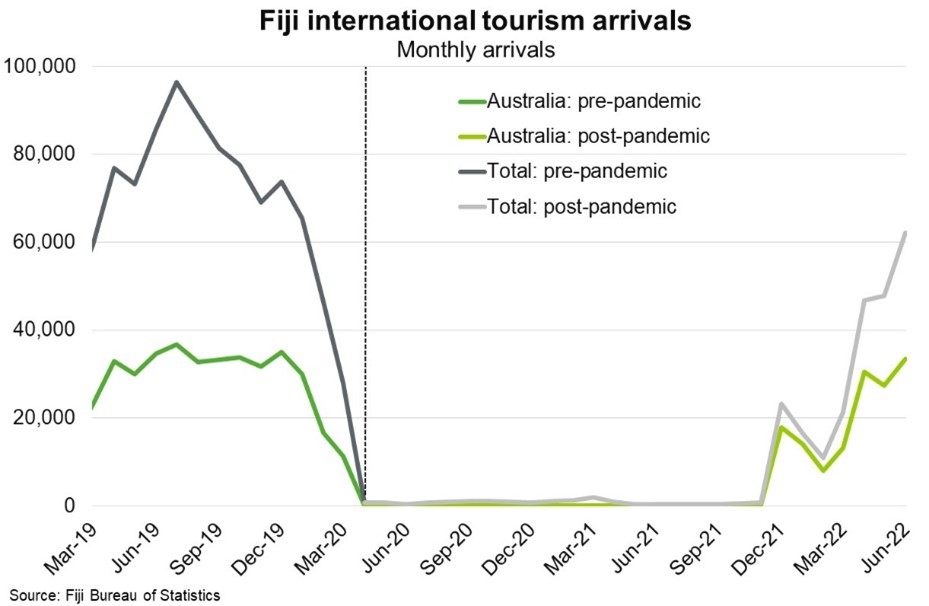Fiji—Strong tourism recovery boosts growth prospects
Fiji’s economy, which shrank by around 20% in wake of pandemic-related global travel restrictions, is strengthening as tourism and related service industries recover following reopening of borders in December 2021. In June, more than 62,000 tourists visited Fiji, roughly three times as many as in March. Since the beginning of the year about 62% of all visitors to Fiji were from Australia (Chart). Indeed, Fiji has increased its market share of Australian tourism, confirming forecast pent-up demand for short-haul leisure travel. Prior to the pandemic, 3% of all Australian travellers (for purposes such as business, holidays, employment, education and other reasons) visited Fiji, but that proportion has risen to 9% through the first five months of 2022. Fiji’s close proximity, high vaccine coverage, good flight connectivity and competitive pricing following border reopening will continue to support tourism prospects.
Tourism is important to Fiji, contributing about 40% of GDP. A stronger than expected tourism recovery prompted the Reserve Bank of Fiji to recently upgrade its GDP growth forecasts; to 12.4% in 2022 (up 1.1 percentage points from the previous December 2021 estimate) and 9.2% in 2023 (up 0.7 percentage points). These forecasts assume visitor arrivals reach 55% of 2019 levels in 2022 and 85% of 2019 levels in 2023, which if recent trends persist, appears achievable. According to reports, tourists are also staying longer and spending more, supporting Fijian employment and boosting earnings for accommodation and service operators. Strong GDP growth rates will support fiscal consolidation and lower debt sustainability risks, as Fiji emerges from the pandemic with a historic level of government debt (around 89% of GDP).
Brightening economic prospects should help lift Australian goods and services exports to Fiji, which fell 28% to $425 million in FY2021. Food and beverage producers are notable suppliers to Fiji’s hotels and should benefit from Fiji’s tourism recovery, while opportunities also exist for investment in infrastructure such as transport, roads and climate-resilient projects.


